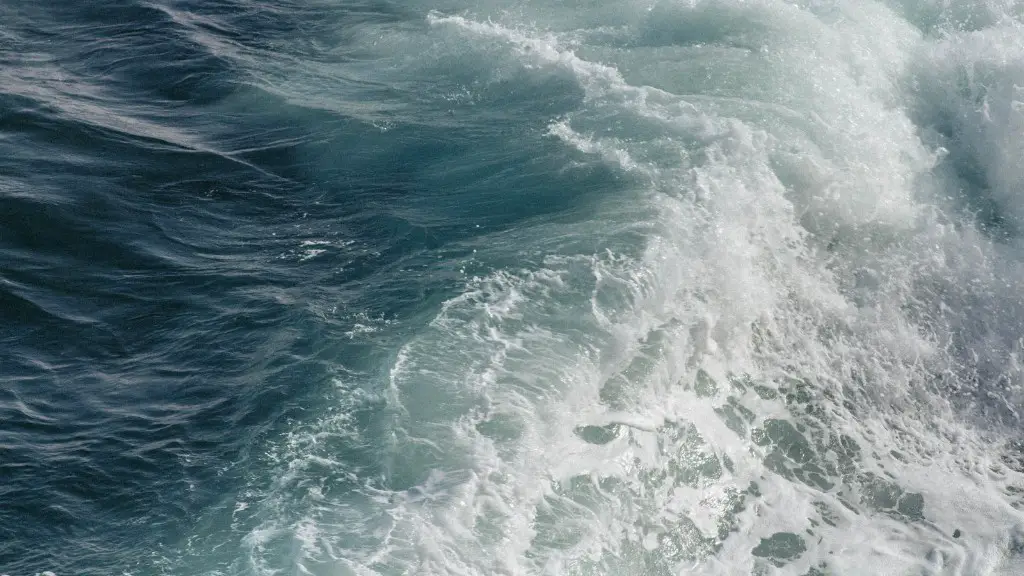The South China Sea is one of the world’s most important ecosystems and a major trading hub. It is home to some of the most diverse marine life on the planet, with hundreds of species of fish, sea turtles, seabirds, and marine mammals. It also holds a rich repository of mineral resources, such as oil and gas deposits, as well as myriad other economic and exploitable resources.
The South China Sea contains some of the world’s busiest shipping lanes, natural gas fields, and fishing grounds. The majority of the South China Sea’s resources are concentrated in the 200-mile exclusive economic zones surrounding each nation with a coastal claim to it. The nations in the region have different and legitimate claims to the resources within the South China Sea.
The region is home to fisheries, many of which provide important food sources for local communities. Currently, there are an estimated 3 million people who rely on the fish stocks in the South China Sea and its surrounding waters for their livelihoods. Some of the most popularly fished species are cuttlefish, squid, yellow croaker, hairtail, and mackerel.
The most valuable resource in the South China Sea is petroleum. It is estimated that there are 170 billion barrels of oil reserves and 900 trillion cubic feet of natural gas in total. To put this into perspective, it is more oil than is found in all of the Middle East combined. Not only is the potential oil and gas production a key contributor to the economies of the nation’s in the region, but it is also a major source of pollution. The pollution from oil extraction can be devastating to the marine environment.
The South China Sea is also an important source of sand and gravel for land reclamation projects in the region. Sand and gravel are used in construction projects such as roads, bridges, and dams. It has been estimated that the total deposit of sand and gravel in the South China Sea could be as much as 10 billion tons, making it a valuable resource for the countries in the region.
The countries bordering the South China Sea also hold their own shares of mineral deposits and other precious metals. These range from gold and silver deposits to rare earth minerals like uranium and titanium. Deposits of these precious minerals are scattered throughout the South China Sea, providing a potential source of wealth for the countries in the region.
The resources found in the South China Sea play an important role in the global economy and are essential to the continued growth of countries in the region. It is therefore essential that the countries in the region work together to manage these resources responsibly.
Environmental Pollution
The exploitation of resources in the South China Sea has caused serious environmental damage, including air and water pollution. Pollution from runoff from factories along the coast has had a devastating effect on the region’s fish stocks, coral reefs, and seabed habitats. Additionally, the construction of oil and gas rigs in the South China Sea can damage the fragile coral reefs and other sensitive habitats.
The increase in shipping activity in the South China Sea has also contributed to air and water pollution. The shipping lanes are now some of the busiest in the world, with hundreds of large ships passing through the area each day. This has led to a rise in air pollution due to the exhaust from ships’ engines, and to increased water pollution from fuel spills and other accidents.
The uncontrolled exploitation of resources in the South China Sea has also been linked to global climate change, through the emission of greenhouse gases from the petroleum industry. The rising sea levels and declining fish stocks are putting immense pressure on the region’s already fragile marine ecosystems. The decline in fish stocks has led to a decrease in the number of people whose livelihoods depend on the resources found in the South China Sea.
It is essential that the countries involved in the South China Sea agree to shared rules and regulations that ensure that the exploitation of these resources is done in a sustainable and responsible manner. This includes monitoring and regulating the amount of pollution that is released into the atmosphere and marine environment. It is also essential that these countries cooperate in order to manage their shared resources effectively, taking into account the interests of the local communities that rely on these key resources.
Conservation Efforts
In order to ensure the conservation and sustainable use of the resources in the South China Sea, there are a number of regional and international initiatives that have been put in place. At the regional level, the South China Sea Strategic Partnership was established in 2009, bringing together the governments of Brunei, Malaysia, Indonesia, Singapore, Taiwan, and Vietnam, in order to discuss the management of shared resources. The partnership has helped to promote open dialogues between these countries and the sharing of best practices for the conservation of the region’s resources.
On the international level, the Association of Southeast Asian Nations (ASEAN) signed the Declaration on the Conduct of Parties in the South China Sea in 2002, pledging to maintain peace and stability in the region. Although the declaration has yet to be fully implemented, it has helped to promote greater cooperation between ASEAN members and China on resource management in the South China Sea.
At the individual levels, NGOs and civil society organizations have worked to raise awareness about the importance of conservation in the South China Sea. These organizations have organized campaigns to encourage responsible management of the region’s resources and to alert the public of the dangers of over-exploitation. They have also worked to ensure that local communities benefit from the exploitation of the resources in the South China Sea, by advocating for a fair share of the wealth generated by the exploitation of these resources.
Climate Change
Climate change is also a major concern for the South China Sea region. Due to the rising sea levels, the coastal areas are becoming more vulnerable to flooding, especially during typhoon seasons. Climate change is also having an effect on the biodiversity of the region, with changes in water temperature and salinity resulting in the alteration of marine habitats. Additionally, the melting ice caps are resulting in the region becoming more prone to extreme weather events, such as typhoons and floods.
In order to combat the effects of climate change, the countries in the South China Sea have begun to take action. Brunei, Malaysia, and Vietnam have signed the Paris Agreement, which entailed a commitment to reduce emissions and limit the temperature rise. Singapore and China have also introduced a number of policies to reduce their emissions and promote renewable energies. Additionally, conservation efforts have been implemented in the region in order to protect marine ecosystems and ensure the sustainability of fishing.
Tensions In The South China Sea
The South China Sea is also the site of tension due to the rival claims of the several nations with a claim to the region. China has had an increasingly assertive policy in the region, claiming nearly the entire South China Sea as their exclusive economic zone. This has led to several territorial disputes with the other nations with a claim to the region, as well as with the United States, who have challenged China’s claims.
The territorial disputes in the South China Sea have prompted several regional and international initiatives to address the issue. ASEAN has sought to work with China to deescalate tensions in the region. The United States and other countries have also sought to encourage dialogue between China and the other claimants. Additionally, the United Nations Convention on the Law of the Sea (UNCLOS) has been invoked to limit escalation and provide a framework for peaceful resolution.
The situation in the South China Sea is complex and has the potential to escalate into a full-scale regional conflict. It is therefore essential that all involved take steps to reduce tensions and promote dialogue. It is also essential that the countries involved work together to ensure the responsible exploitation of the region’s resources and its protection from the effects of climate change.
Conclusion
The resources found in the South China Sea are essential to the economies of the countries in the region and essential to sustaining local communities whose livelihoods depend on them. It is therefore essential that the countries in the region cooperatively manage these resources responsibly. Conservation and preservation of the region’s marine ecosystems must also be a priority, and steps must be taken to reduce the effects of climate change. Finally, it is essential that all involved take steps to deescalate tensions and promote dialogue in order to prevent a full-scale conflict.





